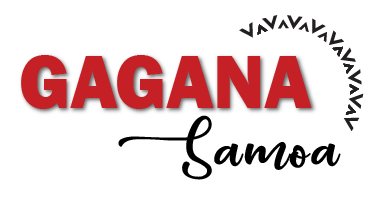…where H K and R are borrowed.
Although it it not included anymore when we list our alphabet letters, the taofi – the glottal stop, marked with in inverted comma ‘ (called a koma liliu) – is treated like another consonant in Samoan words.

Get all the details about Le Pī Samoa in our grammar section: The Samoan Alphabet and Pronunciation Guide
For now, let’s focus on how to pronounce Samoan letters and words.
Pronouncing Samoan Vowels
Samoan vowels sound very similar to vowels in the Spanish language.
[AUDIO COMING SOON]
For English speakers,
- a is like the a in father,
- e is like the e in egg,
- i is like the i in machine (or the ee sound in bee)
- o is like the o in … let’s talk more about this one in a minute
- u is like the u in tuna (as long as you’re not saying tewna)
I don’t actually know of any English words that have the exact close-mid /o/ sound of the Samoan o. The closest is the o sound in words like go, no and so but BEFORE you add the ‘oo’ bit at the end of those words.
Because, you know how go in English is actually pronounced go-oo /goʊ/ …? So for a Samoan o, just take the first part of that vowel sound.
Anyway…
Samoan vowels can either be ‘short’ or ‘long’. Short just means the normal sound (as explained above) and long means you hold on to the vowel sound a bit longer.
Two words that are spelled exactly the same can mean completely different things depending on whether the vowel sound is ‘dragged’ (long) or not. For example: tama with two short [ɑ] sounds means ‘boy’. If you drag the second a, then the word means ‘father’.
[AUDIO COMING SOON]
To indicate long vowels in writing, we can add a macron over the vowel, so father in Samoan would look like this: tamā.
Other examples of Samoan words that look the same except for the length of their vowels include:
So yes, how we hold on to a vowel really matters.
Pronouncing Samoan Consonants
As for our consonants, they always represent just one sound.
So our S is always going to be ‘s’ (never ‘sh’ or ‘z’) and our M is always going to sound like ‘m’, but some of our consonant sounds are not exactly like the consonants in English.
The Samoan P has a bit of a ‘harder’ sound than the English P, which means it’s a little more voiced, so it sounds somewhere between an English P and B.
For example, the Samoan word pese, which means song or sing, is pronounced almost like ‘bese’.
Likewise, the Samoan K is a bit ‘harder’ than the English K. It’s a bit more voiced, so we pronounce it almost like the English G sound. So, the Samoan word for cabbage, kapisi, sounds very similar to ‘gabisi’ (using the English pronunciations of these italicised letters).
The Samoan T, however, stays nice and light, almost with a soft, subtle ‘s’ sound right after the T.
Our consonant that really doesn’t sound like it looks like it should is G. The Samoan G is pronounced like the ‘ng’ in the middle of ‘hanger’ or ‘singer’.
Quick Tips for Pronouncing Samoan Words
On this website (when we’re done constructing it) every time we introduce a new Samoan word, we’ll give you audio or a pronunciation guide or both, so you’ll know how it’s meant to be pronounced.
But here are a few tips to help you pronounce Samoan words you encounter in the (written) wild:
One Consonant at a Time
Samoan words never put two consonants together, so you’ll never see a word like ’empty’ with ‘mpt’ all squished together in the middle.
We prefer our words to go like:
[consonant] [vowel] [consonant] [vowel]…
or: [consonant] [vowel] [vowel] [vowel] etc.
…and ALL our words end with vowels!
Get Used to Those Vowels
Samoan words love vowels. Sometimes our words will string 3, 4, 5 and even more vowels together, and yes.. that can get very challenging for English speakers, especially, to pronounce.
For example: fa’aea means ‘to exalt’. That’s one consonant with four vowels in a row.
Perfectly normal.
Fa’aeaina is a variation of that word. How do you think that’s pronounced?
This next point might help.
Emphasis on the Second to Last Syllable
Unless otherwise indicated (usually by macrons), most Samoan words are emphasized on the second to last syllable. Kinda like in Italian.
For example, in that word fa’aea, we would keep our tone neutral for the fa’a part then emphasize e before we drop back on the a.
But then in the longer variation of that word, fa’aeaiina, the emphasis moves over a bit.
Listen for the emphasis on these other words:
You get the idea. 😉
